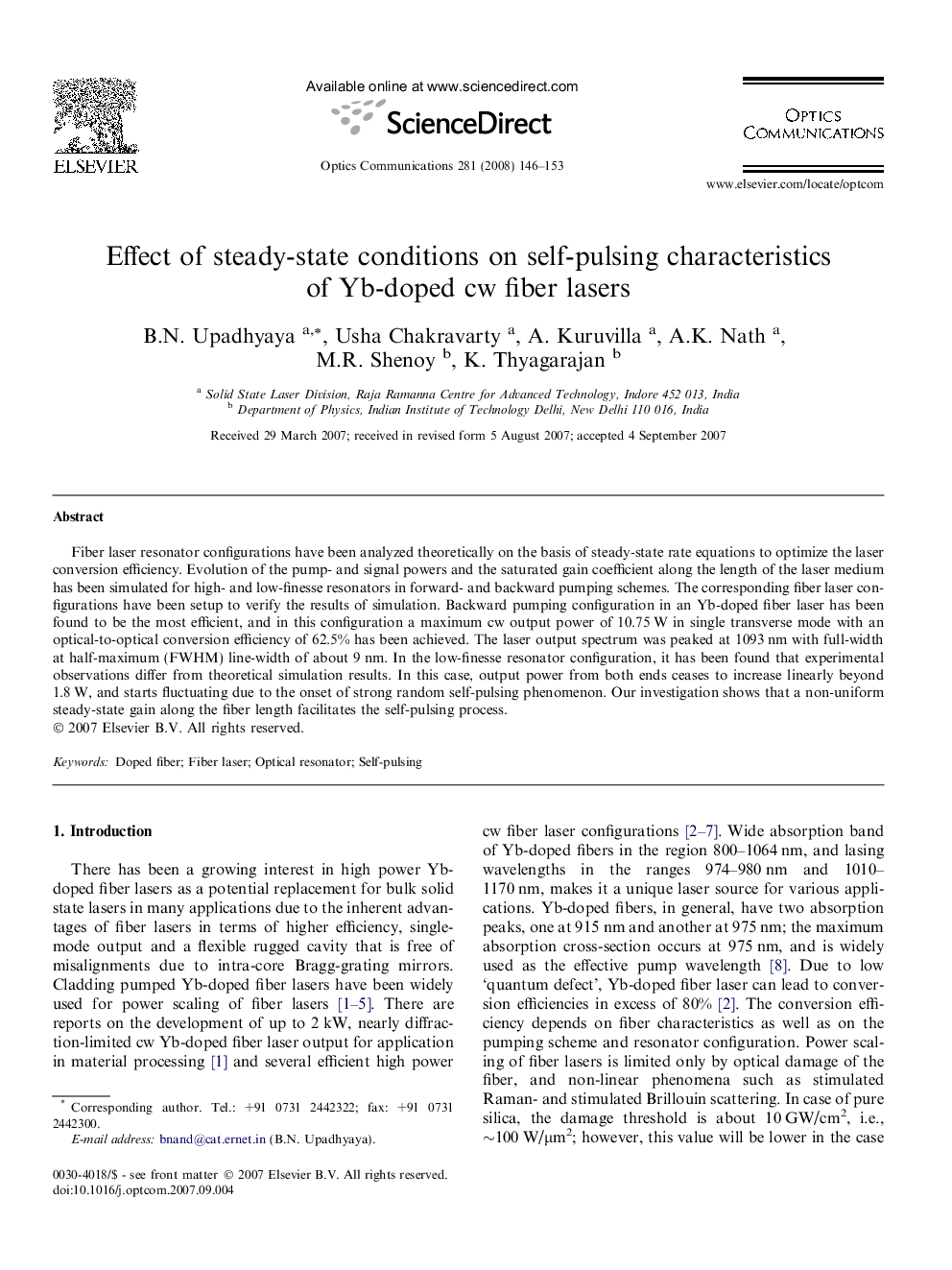| Article ID | Journal | Published Year | Pages | File Type |
|---|---|---|---|---|
| 1541159 | Optics Communications | 2008 | 8 Pages |
Fiber laser resonator configurations have been analyzed theoretically on the basis of steady-state rate equations to optimize the laser conversion efficiency. Evolution of the pump- and signal powers and the saturated gain coefficient along the length of the laser medium has been simulated for high- and low-finesse resonators in forward- and backward pumping schemes. The corresponding fiber laser configurations have been setup to verify the results of simulation. Backward pumping configuration in an Yb-doped fiber laser has been found to be the most efficient, and in this configuration a maximum cw output power of 10.75 W in single transverse mode with an optical-to-optical conversion efficiency of 62.5% has been achieved. The laser output spectrum was peaked at 1093 nm with full-width at half-maximum (FWHM) line-width of about 9 nm. In the low-finesse resonator configuration, it has been found that experimental observations differ from theoretical simulation results. In this case, output power from both ends ceases to increase linearly beyond 1.8 W, and starts fluctuating due to the onset of strong random self-pulsing phenomenon. Our investigation shows that a non-uniform steady-state gain along the fiber length facilitates the self-pulsing process.
